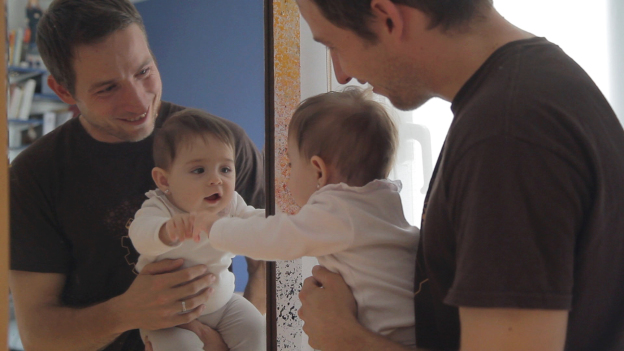“A child’s babbling practice provides the essential resources for the identification and shaping of early word forms”.
Vihman, DePaolis & Keren-Portnoy, 2009
Communicative babbling
Communicative babbling occurs when babies intend something by the sounds they produce. They may use canonical babble (e.g., [baba], or more variegated forms, combining several consonants in sequences like [bagaga], [cota] or [tapitapi], or a mixture of the two.
You might wonder how we can tell if a baby intends to mean something by the sounds they produce or is simply engaging in motoric exploration. Context is important to distinguishing between the two: communicative babbling normally occurs in episodes of joint attention. Here, when a baby is intending to communicate, they typically co-ordinate vocalizations with looks between their caregiver and the thing they want to talk about. They might also combine babble with pointing gestures.
As infants become more practiced, communicative babbling of this type increasingly reflects the specific prosodic and phonological characteristics of the language children are acquiring.
Babies typically use pointing gestures together with babbling when they begin to communicate intentionally.
Babies begin to babble intentionally between 9 and 10 months. Around this time, they learn that speech and gestures are produced in order, for example, to ask for things or to comment on things.
Other fundamental developments also take place in this period. In particular, communicative gestures tend to emerge around 11 months, when babies begin to point to things in their surrondings.
In addition, babies start to gain insight into the fact that different forms of vocalization are used to convey different meanings.


